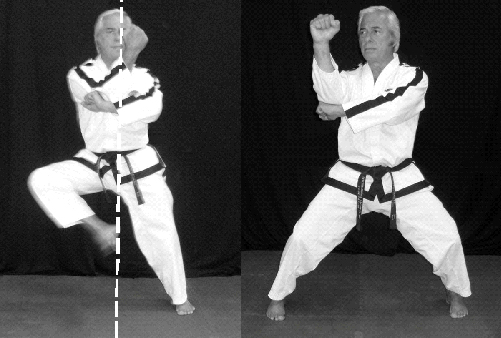
Social media has allowed us to observe the medley of existing methodologies in knowledge transfer. When Taekwon-Do is described, it is always mentioned as the martial art created and systematized by General Choi Hong Hi.
This fact contrasts with the publications; however, insistence on personalization in pedagogical methodology persists. These aim for the same outcome, but the proposed systems are intrinsically related to the sports aspect. Was the General mistaken? I don’t think so, so draw your own conclusion.
International Instructor Courses, Master Classes, literature, and countless other things are done just to end up doing what is seen in a tournament and turning a deaf ear to experience and the volumes written on the subject.
The only way to properly use the information taught in different courses is by practicing it. If you don’t do that, you’re wasting your time in the courses unless you were there just for the certificate. It’s difficult to do this during regular training days because they are focused on improving the athletic performance of competitors. So is it not possible to incorporate the information from special classes?
It is possible, but not in group classes. In those, you must follow the orders of the person leading the class, which, as mentioned, aims to improve the student’s performance in the sports aspect.
To incorporate the knowledge offered in different courses, you must work alone. Your own body will begin to notice improvement after many sessions of this type of training. When practicing patterns (tul), there is no choice but to do it alone. It is done in a group when training for a competition team, but even then, you must have worked alone to possess the required capability to be accepted into the group, following the instructions provided by the instructor.
The same approach must be followed in other aspects. Group classes are necessary for sparring, which ultimately serves as the practical application of what has been learned alone. If this process is not fulfilled, our knowledge will be empty because it will lack the test of confrontation with an opponent. In other words, we will be theoretical experts in a reality that demands practice.
In group classes, we usually learn to recognize our deficiencies in timing, distance, and our ability (or inability) to solve what the opponent presents. The demands of confrontation prevent us from seeing our biomechanical deficiencies, and we often attribute skills and power to the opponent that they may not actually possess. The only way to correct errors in our movements is by incorporating the information received in courses and special classes, but for that, we must work alone.
There are details that must be taken into account for the success of this strategy:
a-The information sought to be incorporated must be correct and consistent with what the discipline’s founder proposed. Other opinions about the biomechanics of patterns (tul) have only contributed to confusion.
b- Be honest with oneself in order to recognize our shortcomings.
c- Use a method of visualizing the work being carried out (mirror, video, etc.).
d- Since the work requires a considerable number of repetitions, unchecked information should not be used.
e- In case of any doubt, consult with the instructor and refer to literature that addresses the topic.
The proposal is not easy, but it is the only path.
SGM Ricardo Desimone